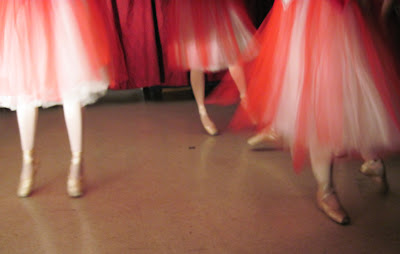Jeremy Stern's show, "Negative Spaces / Positive Places," is up at the
Sierra Arts Gallery in downtown Reno. Stern, currently an MFA candidate at UNR, is presenting a series of modified maps. The modifications are mostly subtractions.
In
A New USA: Intertate Highways as New State Borders, most of the place names are blotted out with correction fluid (one glaring exception: the Great Salt Lake is still labeled). The networks of interstate highways remain, now traversing anonymous territories (the white-out clumps up in mild relief, a topographical gloss). In other pieces, Stern has cut elements out of the maps, so that a dialogue is set up between the swiss-cheesed surfaces and the shadows that are projected behind them, onto the wall. Place-names have been meticulously excised (I'm assuming with an x-acto), the recognizable outlines of states or countries still held together by the circulatory networks of roads, now hanging like a multicolored lace, set against the latticework of its own monochrome shadow.

Some larger pieces are made of maps with more modest excisions, the maps then turned over so that their blank backs face the viewer -- who can still see glimpses of reflected bright map-colors through the windows of the cuts.

There's usually a certain melancholy to artworks that deliberately foreground erasures: an evocation of something lost, suppressed, irretrievable. But Stern's maps don't trade in melancholy -- in fact, the subtractions reach for a certain clarity. I wondered if the work was a reaction to information overload, the way our experience is buried in data. Probably because I'd recently seen Garnet Hertz's presentation on his
OutRun project -- which in its prototype phase used data provided by Google Earth -- I began to think what it would be like to drive over the country using a GPS auto navigation system stripped of all road names and place names, orienting yourself via a network scrubbed clean of language. Would it allow you to situate yourself more profoundly in space, being aware of the overarching pattern of the streets, rather than "localizing" your consciousness from one street name to the next, narrowing your perceptions to the next left or right turn?
There was an article I came across a few weeks ago, that was partially about the ascendency of GPS navigation in shipping; one side-effect is that many mariners no longer know
how to use a sextant. Besides being eminently useful, sextant navigation strikes me as being inherently poetic: in order to find your location on the globe, you look to the stars. You find out where you are, not just on the surface of the globe, but in relation to the wider galaxy, caught between the intersection of starlight and horizonline. What is lost, with GPS, is an orientation that is literally celestial. GPS data is more instant and more accurate, but it's also more shrunken, less eternal. Both GPS and the sextant allow you to say "You Are Here," but with GPS "Here" is a much smaller place.
Stern's maps seemed attuned to this sort of interplay between where you think you are and where you actually are -- where borders of habit and borders of infrastructure make their own negotiations. His fastidious cutting is devoted the strangeness of "Here."
(all photos taken by Anthony Alston)



































































